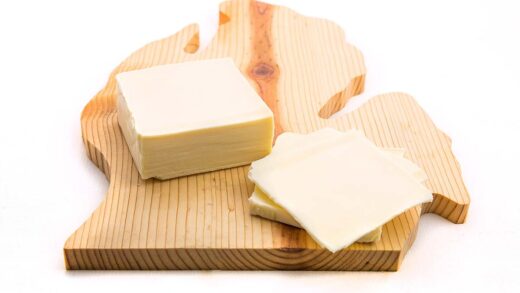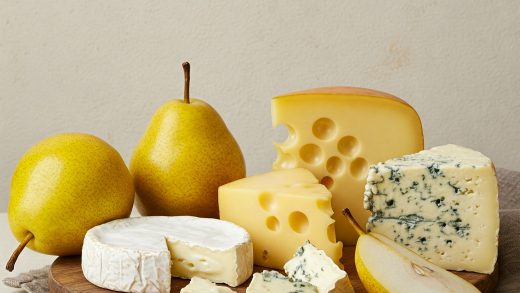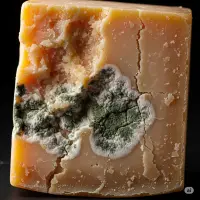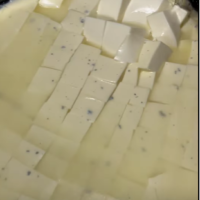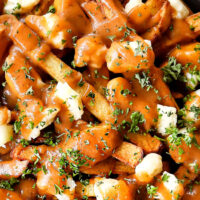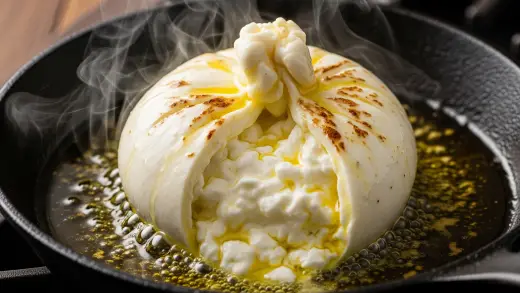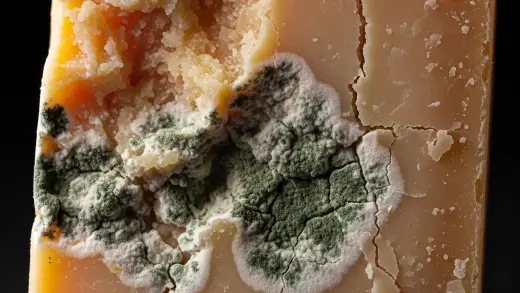Yes, you can eat some cheese rinds, but not all. Edible rinds include natural rinds (like on Parmesan), washed rinds (like Taleggio), and bloomy rinds (like Brie).
Ever wondered about that tough, sometimes funky-looking edge on your favorite cheese? That’s the rind, and it’s more than just a wrapper! Think of it as the cheese’s bodyguard, protecting it from unwanted molds and bacteria while it ages.
But the rind does more than just protect; it also plays a big part in how the cheese tastes, adding complex flavors as the cheese matures. So, can you eat it? That’s the million-dollar question!
The truth is, some cheese rinds are delicious and perfectly safe to eat, adding a unique texture and flavor to the cheese.
Others, however, are a big no-no. They might be made of wax, cloth, or even contain harmful molds. So, how do you know which rinds are edible and which ones should be tossed? Let’s dive into the post to know that.
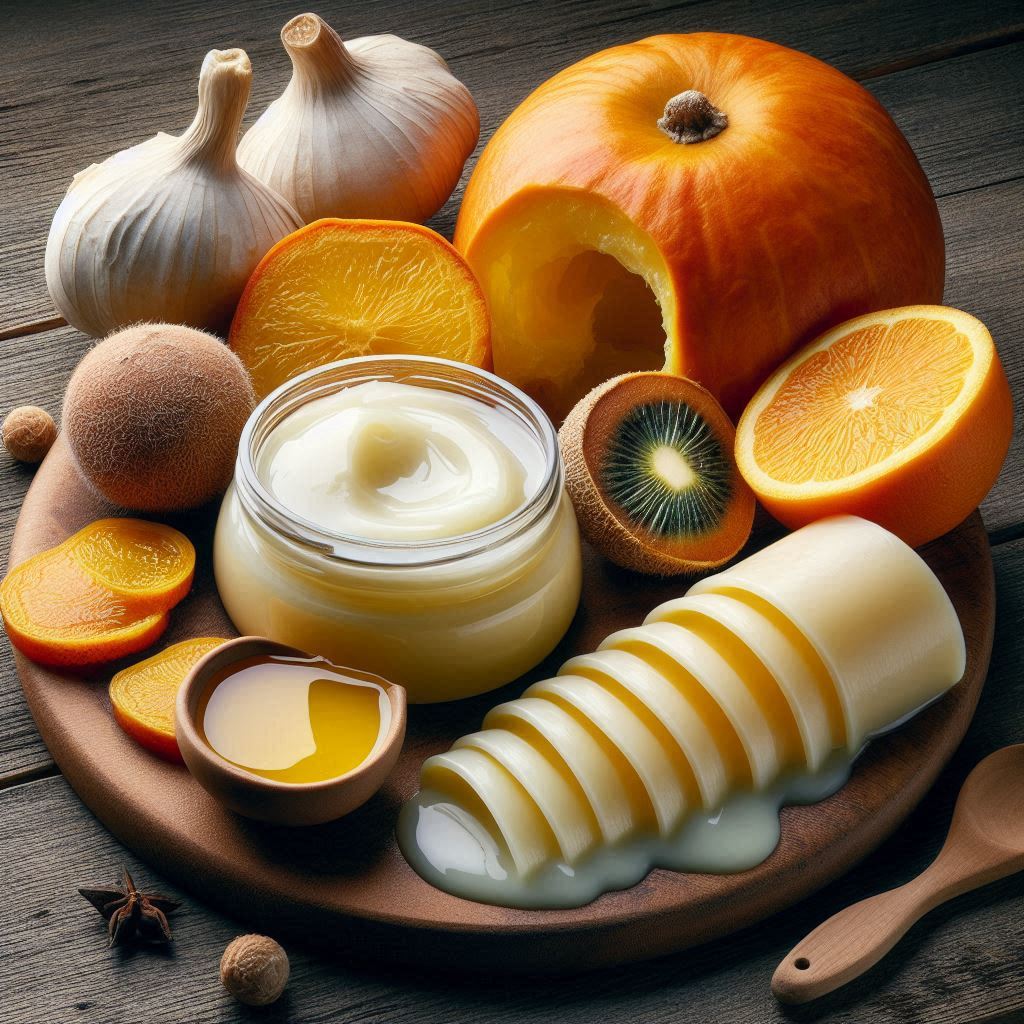
What is Cheese Rind?
Cheese rinds are the outer layer of cheese. They’re like the cheese’s skin. Rinds form naturally as cheese ages. Or, cheesemakers add them. There are different kinds of rinds. Natural rinds form as cheese dries. They can be rough and sometimes moldy.
Don’t worry about the mold! It’s often safe and adds flavor. Washed rinds are washed with liquids. This makes them sticky and smelly. Bloomy rinds have a white, fuzzy mold. This mold is safe to eat. Wax or plastic rinds are not natural.
They’re added by cheesemakers. These rinds are not edible. Rinds help cheese age. They affect the taste and texture. So, rinds can be very different. Some you can eat, and some you can’t!
Edible Cheese Rinds: A Guide
Okay, let’s talk about the yummy part – edible cheese rinds! There are a few kinds you might encounter.
Natural Rinds
These rinds look, well, natural! They can be bumpy, rough, and sometimes have a little bit of mold on them.
Think of the hard rind on Parmigiano-Reggiano or the slightly dusty rind on Gruyère. These rinds form naturally as the cheese ages, so they’re often safe to eat.
They usually have earthy, nutty, or even slightly fruity flavors. They add a nice crunch and depth to the cheese.
Washed Rinds
Washed rinds are a bit more intense. They’re often sticky and have a strong, sometimes pungent smell. Cheeses like Taleggio and Époisses are famous for their washed rinds.
These rinds are washed with brine, beer, or other liquids as the cheese ages, which encourages the growth of special bacteria that make them edible (and stinky!). The flavor can be quite strong and pungent, but some people love it!
Bloomy Rinds
These are the soft, white, and fuzzy rinds you see on cheeses like Brie and Camembert. That fuzz is actually a safe-to-eat mold! It’s intentionally added to the cheese and gives it a creamy, mushroomy flavor.
The rind and the cheese inside work together to create a smooth, rich texture. Just remember, if a bloomy rind looks slimy or smells really bad, it’s probably gone bad, and you shouldn’t eat it.

Cheese Rinds to Avoid
Now, let’s talk about the cheese rinds you should not eat. It’s just as important to know which rinds are safe as it is to know which ones to avoid!
Waxed/Plastic Rinds
These are the easiest to spot. They’re usually brightly colored and feel waxy or plastic-like. Think of the red wax on Babybel or the plastic coating on some Gouda. These rinds are not meant to be eaten.
They’re there to protect the cheese and keep it fresh, kind of like a wrapper. Just peel or cut them off before you enjoy the cheese inside.
Rinds with Additives
Some cheese rinds might have artificial colors, preservatives, or other things that aren’t food. These additives aren’t usually harmful in small amounts, but it’s best to avoid eating the rind if you’re not sure what’s in it. Always check the label if you’re curious.
Moldy Rinds (with a but)
This is where it gets a little tricky. Remember those bloomy rinds with the white, fuzzy mold? Those are safe! The mold is a special kind that’s added to the cheese.
However, if you see mold on a cheese that’s not supposed to have it (like a hard cheese with a natural rind), it’s probably not a good sign.
It could be a sign that the cheese has gone bad. If you’re unsure, it’s always best to err on the side of caution and not eat the rind. When in doubt, throw it out!
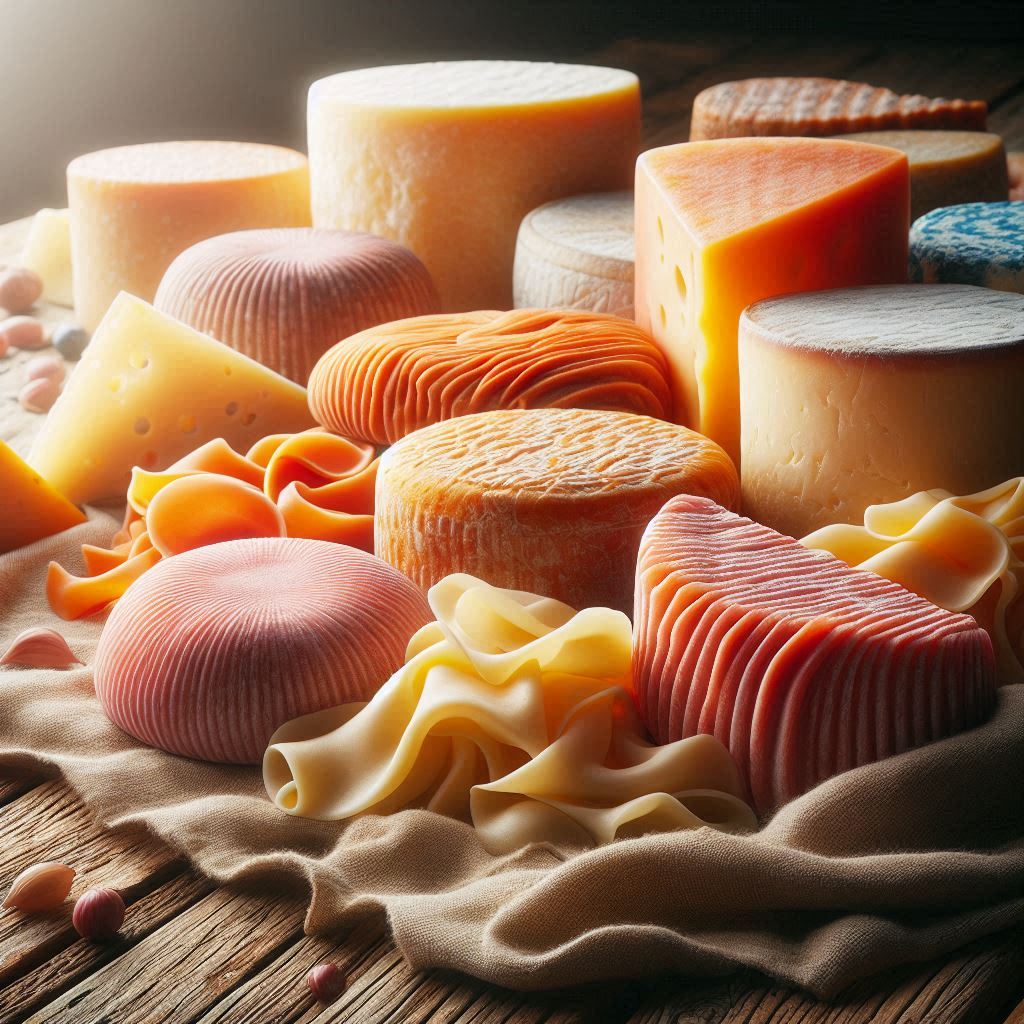
How to Tell if a Cheese Rind is Edible (Practical Tips)
So, you’ve got a piece of cheese and you’re wondering about that rind. How do you know if it’s safe to eat? Here are a few practical tips to help you become a cheese rind detective:
Check the Label
This is the easiest way to find out! Many cheesemakers will actually state on the label if the rind is edible. Look for phrases like “edible rind,” “rind can be consumed,” or something similar. If it doesn’t say anything, it’s probably best to assume it’s not edible.
Examine the Rind
Take a good look at the rind. Is it super hard, waxy, or plastic-like? If so, it’s definitely not for eating. Also, be wary of rinds with lots of visible mold, unless it’s a bloomy rind (like Brie or Camembert).
Remember, those fuzzy white rinds are okay! But other molds could be a sign that the cheese has gone bad.
Smell the Rind
Your nose knows! Give the rind a sniff. If it smells really bad, like ammonia or something just “off,” it’s probably not edible. A slight earthy or musty smell is often okay, especially for natural rinds.
When in Doubt, Ask!
If you’re still not sure, the best thing to do is ask your cheesemonger (that’s the person who works at the cheese shop). They’re experts and can give you the lowdown on any cheese. They can tell you about the rind, the flavor, and everything else you need to know. Don’t be shy – they’re there to help.
How to Eat Cheese Rind (Serving Suggestions)
You’ve identified an edible rind – fantastic! Now, how do you enjoy it? Here are some ideas for making the most of those tasty cheese rinds:
Eat it with the Cheese
The simplest way to enjoy an edible rind is to just eat it along with the cheese. This way, you get the full flavor experience, with the rind adding its unique texture and taste to the creamy or crumbly cheese inside.
Try it with a piece of Parmigiano-Reggiano, a wedge of Brie, or a slice of Taleggio.
Grate Hard Rinds
Have a super hard rind, like the one on Parmigiano-Reggiano? Don’t throw it away! You can grate it over pasta, soup, or salad for a burst of cheesy flavor. It adds a salty, savory kick to your dishes.
Flavor Stocks and Soups
Cheese rinds can add depth and richness to your cooking. Toss a hard rind into your stock pot or soup while it’s simmering. The rind will slowly release its flavor, making your broth even more delicious. Just remember to remove it before serving!
Bake or Fry for a Snack
Believe it or not, some cheese rinds can be transformed into crunchy snacks! Cut the rind into small pieces and bake or fry them until they’re crispy. They make a surprisingly tasty treat. This works especially well with natural rinds.
Health Benefits and Considerations (Optional)
While cheese rinds aren’t usually the main source of nutrition in your diet, some edible rinds can offer a little something extra.
For example, hard rinds like Parmigiano-Reggiano contain calcium, which is important for strong bones. However, the amount of calcium you get from a small piece of rind is probably not significant compared to other dairy sources.
It’s also important to be aware of potential risks. If you have a dairy allergy, obviously you should avoid all cheese rinds, even the edible ones. Also, always make sure you’re handling cheese rinds safely.
Wash your hands before and after touching them, and store them properly to prevent any bacterial growth.
And, as we talked about earlier, if a rind looks or smells suspicious, it’s always best to err on the side of caution and not eat it. Food safety is key!
FAQs
Should you eat the skin of cheese?
You should only eat the rind of certain cheeses. Edible rinds include natural, washed, and bloomy rinds. You should avoid waxed or plastic rinds. Always check the label or ask a cheesemonger to be sure. If a rind looks or smells bad, don’t eat it.
Is it okay to eat the wax on cheese?
No, you should not eat the wax on cheese. Wax rinds, along with plastic coatings, are designed to protect the cheese, not to be consumed. They are not food safe and can be difficult to digest. Always remove the wax or plastic before eating the cheese.
What cheese can you not eat the rind?
You should avoid eating the rinds of cheeses with wax or plastic coatings. These are designed for protection, not consumption. Also, don’t eat rinds that look or smell bad, even if they’re a type that’s usually edible. Always check the label or ask a cheesemonger if you’re unsure.
Is it OK to eat off cheese?
No, you should not eat moldy cheese unless it’s a cheese specifically designed to have mold, like Brie or blue cheese. Mold on other cheeses can be harmful. 1 If you see mold on cheese that isn’t supposed to have it, discard it.
Conclusion
So, there you have it! The world of cheese rinds can be a little tricky, but now you’re armed with the knowledge to navigate it like a pro.
Remember the key takeaways: know your cheese, understand its rind, and most importantly, enjoy! Don’t be afraid to explore different cheeses and discover the unique flavors their rinds have to offer. Now, tell us in the comments, what’s your favorite edible cheese rind?

